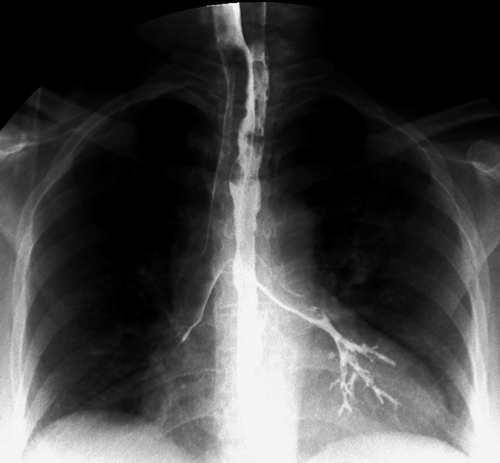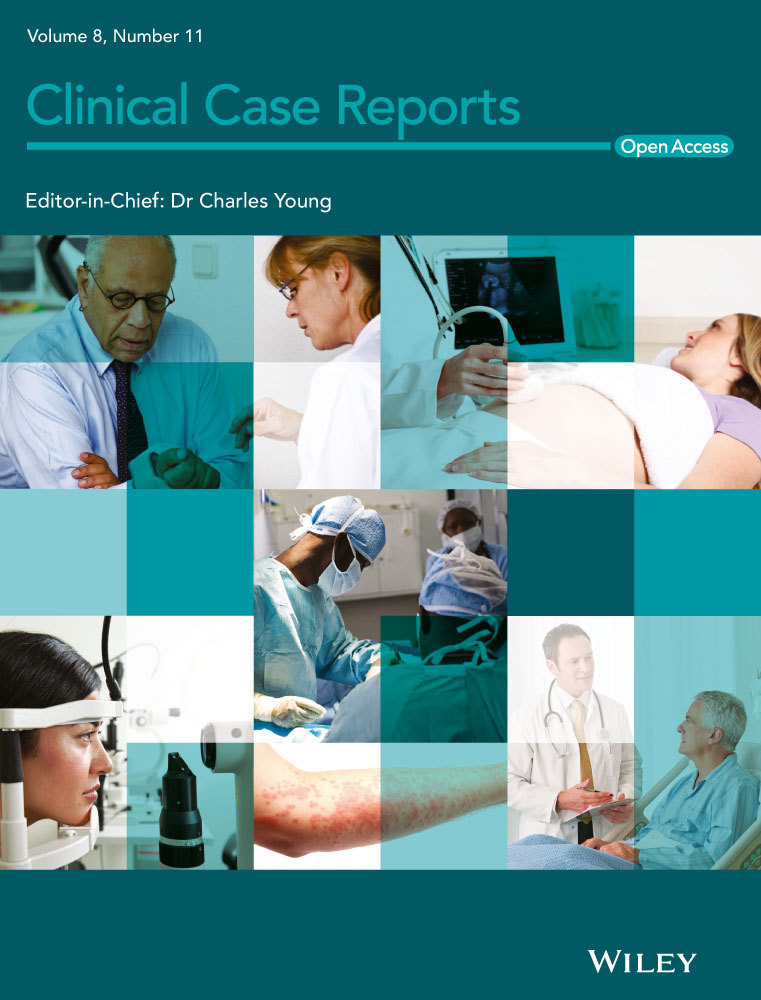Barium aspiration - Accident or complication?
Abstract
Aspiration of barium sulfate is possible during radiographic contrast procedures and is potentially life-threatening in severe cases. In patients with dysphagia or suspected tracheoesophageal fistula, barium compounds may be used, considering lateral projection fluoroscopy of the pharyngeal phase of swallowing, but iso-osmotic agents should also be considered.
1 INTRODUCTION
A 49-year-old woman with major depression was admitted to the emergency department after caustic product ingestion. She presented tachypnea, stridor, and airway burns. After orotracheal intubation and intensive care admission, she performed an upper endoscopy revealing extensive esophageal ulceration and gastric necrotic areas. Despite an initial clinical improvement, she presented dysphagia and underwent a gastroesophageal transit. During the procedure, chest x-ray showed opacification of trachea, both main bronchi, and the left inferior segmental and lobar bronchi (Figure 1). Tracheoesophageal fistula was excluded and barium aspiration was diagnosed. The patient started respiratory kinesiotherapy with no evidence of respiratory failure or pneumonitis.

Barium contrast is used in the study of esophageal morphofunctional changes.1 Contrast aspiration is rare and usually benign, but several complications have been reported, such as pneumonitis or respiratory failure.1, 2 In patients with dysphagia and higher risk of aspiration, the use of barium is preferable to high-osmotic water-soluble agents due to the risk of pulmonary edema, but iso-osmotic agents may be considered. Typically, the right main bronchus is more affected, but not in this case probably due to patient's position and mucosal changes. In the case of barium use, lateral projection fluoroscopy of the pharyngeal phase of swallowing should be considered.
CONFLICT OF INTEREST
The authors declare that they have no conflict of interest.
AUTHORS CONTRIBUTIONS
JRP: study conception, acquisition and analysis of the data, and drafting of the manuscript; MT: study conception and drafting of the manuscript; FF: study conception and drafting of the manuscript, critical revision of the manuscript. CN: study conception, acquisition and analysis of the data, supervised the drafting of the manuscript, and critical revision of the manuscript. All authors reviewed the final draft of the manuscript and approved its submission.
ETHICAL APPROVAL
Compliance with ethical standards.




